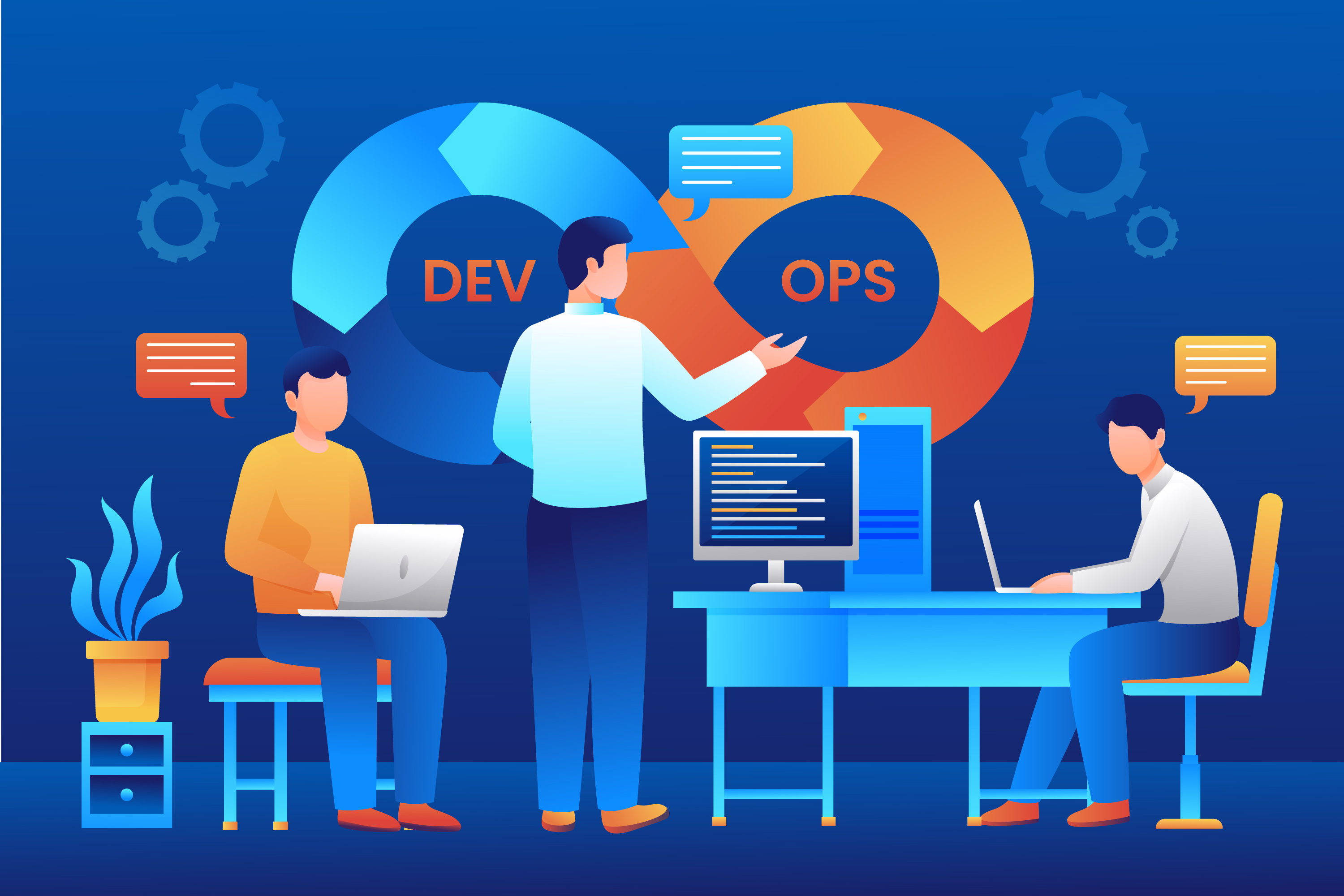Your Vision, Our Expertise. Your Trusted Web and App Development Partner.

DevOps Solution
Event-Driven Architecture in DevOps: Reacting to Change in Real Time
In the ever-evolving landscape of software development and deployment, the need for agility and responsiveness has become paramount. Traditional architectures, while effective in their own right, often struggle to keep pace with the dynamic demands of modern applications. Enter Event-Driven Architecture (EDA), a paradigm that offers a solution by enabling systems to react to events in real time. In the context of DevOps solution, EDA has emerged as a powerful tool for facilitating seamless integration, continuous delivery, and efficient scalability.
Understanding event-driven architecture
At its core, event-driven architecture revolves around the concept of events – significant occurrences or changes within a system. These events could be user actions, system notifications, or data updates, among others. Rather than relying on synchronous communication between components, EDA decouples them by introducing a layer of intermediaries known as event brokers or message queues. These brokers facilitate the publishing and subscribing to events, allowing different components to communicate without direct dependencies.
Key components of event-driven architectures
Event producers are responsible for generating events. They could be event interfaces, backend services, IoT services and external systems.
Event brokers, also referred to as message brokers, serve as intermediaries between event producers and consumers. For example, Amazon SQS, Apache Kafka, and RabbitMQ.
Event consumers subscribe to specific types of events, and they react accordingly. They could trigger further action, update database and send notifications to users.
Advantages of event-driven architecture
Scalability: It enables horizontal scalability by allowing components to be added or removed independently. As the system grows, additional instances of event consumers can be deployed to handle the increased load.
Flexibility: Decoupling components through event-driven communication promotes flexibility and resilience. Hence, changes to one component don’t necessarily impact others. At the same time, it fosters modular design and easier maintenance.
Real-time responsiveness: By reacting to things as they occur, systems built on event-driven architecture can provide real-time feedback and updates to users. is is particularly beneficial in applications where timeliness is critical, such as financial trading platforms or IoT networks.
Fault isolation: Since components in an event-driven system are decoupled, failures in one part of the system are less likely to propagate to others. This isolation enhances fault tolerance and makes it easier to identify and resolve issues.
Streamlines integration: EDA simplifies integration between disparate systems by abstracting away implementation details. Components can communicate through a common language of events, regardless of the technologies or platforms they're built on.
Implementation of event-driven architecture on DevOps
You will have to follow some steps to implement event-driven architecture on DevOps.
Start by identifying the events that are most relevant to your business processes. These could be user interactions, system events, or external triggers.
Define clear schemas for your events, including metadata and payload information. This ensures consistency and interoperability between different components.
Select a reliable event broker or message queue that can handle the volume and velocity of events in your system. Popular choices include Apache Kafka, RabbitMQ, and AWS SNS/SQS.
Determine the appropriate event-driven patterns for your use case, such as publish-subscribe, event sourcing, or command-query responsibility segregation (CQRS).
Develop event handlers or consumers that can process incoming events and trigger appropriate actions. These handlers should be scalable, fault-tolerant, and capable of handling a variety of event types.
Continuously monitor the performance and health of your event-driven system and optimize as needed to ensure reliability and efficiency.
In conclusion, event-driven architecture offers a powerful framework for building agile, responsive systems that can react to change in real time. In the context of DevOps solutions, EDA aligns well with the principles of automation, resilience, and continuous delivery. Hence, it enables organizations to deliver value to customers faster and more reliably. By embracing EDA, DevOps teams can stay ahead of the curve in today's rapidly evolving digital landscape.
Our Tags
Our Services
Let's Discuss Your Project
We're happy to hear your project goals and turn them into a next-level digital product. Get a free consultation to make this happen.
LETS SCHEDULE A CALLCustomer Voice
What Our Customer Says About Ogma Conceptions
-

Always great communication “Have worked with Ogma in several occasions and for a few projects. Always great with communication, meeting deadlines, and most importantly solving problems in an efficient way.”

Ricardo
Owner of Revolution Australia
-

“Finally a team that listened to our ideas and what we wanted and not try to push their own agenda. They have continually grown with us and adapted to a changing business world.”

Chris Robinson
Owner of Spring Hotel Bequia
-

Koodon “The teams at Ogma were very prompt in developing my 5 new pages and moving others around. Thanks again.”

Alisha Fisher
Owner of Australia
-

Great job! “Great job Ogma Conceptions Team!! We released the new app this week and what a success! The new design has been very well received from the truckers. Thank you for the hard work team!”

Miguel
Owner of The BullDog Group LLC
-

Excellent! “Excellent team, expertise in web design, completing the tasks on target, etc. I love this team..”

Sakthivel S
Owner of Company of USA
-

Great! “Ogma Conceptions is a great organization to work with! I come up with iOS and Android app in ReactNative and they stand out really well. Really recommended.”

Umar Hameed
Owner of Company of USA
Recent Awards & Certifications

Small team, but Big in ideas
Ogma Conceptions has always believed in delivering the best digital service to its customers. Since the inception of the organization, we are delivering the best services according to the need of the customers by keeping up with the changes in the world of technology. Our fruitful work mingled with the updated technology have helped many people with their various needs. We hope to work more diligently towards our goal.
WHAT WE DO
CONTACT Us
- India Address:
- 5th floor, Shaila Tower, J1/16,
Block - EP & GP, Sector - V, Salt Lake,
Kolkata - 700091, West Bengal
- USA Address:
- 3300 Triumph Blvd Suites 100
Lehi, Ut 84043
- Email Address:
- contacts@ogmaconceptions.com
- Phone Number:
- +91 9883568464
Copyright © Ogma IT Conceptions (Pvt.) Ltd. All Rights Reserved.
CIN - U72300WB2013PTC198154
Contact Us
Book a Free Consultation or fill out the form below and we'll get back to you once we've processed your request.






